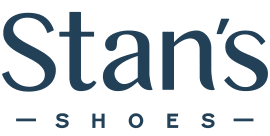How We Grew an eCommerce Brand’s Monthly ROAS From 49% to 582%
After three years of stagnant digital growth, Stan's came to Granular looking to increase sales, maximize their ROAS, and boost local store awareness.
Background:
Stan’s Shoes is a three-generation, family-owned business with five brick-and-mortar store locations across southeastern Wisconsin. They also happen to be an authorized retailer for multiple major shoe brands in the US. As an official retailer, they can get up to 50% of their advertising costs back (in the form of “co-op dollars”).
Note: For the purposes of this case study, the results are based on the account ad spend. We did not inflate the return on ad spend (ROAS) by only calculating the 50% of ad costs Stan’s spent after reimbursement. If we did that, the return would be even greater.
The Opportunity:
Before working with Granular, Stan’s spent almost three years trying different Google Search strategies, like bidding on their brand name and their top shoe brands. Over the course of three years, their ROAS was about 4%.
After Granular did an audit of the account, we saw that there were many opportunities to restructure the account to focus on top-converting keywords, build out Shopping campaigns to increase sales, and expand the Facebook strategy into a full-funnel approach on social media.
Stan’s main key performance indicators (KPIs) were to remain profitable, raise brand awareness, and get people into the stores.
Granular’s Solution:
Our overall strategy for digital was to use the revenue from national shopping campaigns to support local awareness efforts. This would allow Stan’s to remain profitable while also increasing their brand presence in the area surrounding their brick-and-mortar locations.
We segmented our Google Shopping campaigns by individual brands. This allowed us to have more control over our bid and budget and qualified Stan’s to continue to submit 50% of a qualified brand’s ad spend for reimbursement. Additionally, this segmentation gave us insight into the profitability of each brand, so we could make data-driven decisions on whether or not to run a brand on a month-to-month cadence. This is especially important in e-commerce when seasonality comes into play.
On Google Search, we focused our bidding on brand keywords to capture as much local traffic as possible and make sure their competitors did not gain any stake in their established market share.
On Meta (Facebook and Instagram), we supported the national shopping efforts through Facebook Catalog campaigns. Like Google Shopping, we divided our campaigns up by brand and made a retargeting campaign for people who left items in their carts but didn’t buy them. All of the Catalog campaigns were nationally targeted to ensure we had a large enough audience.
Finally, to support our local brand awareness, we launched Facebook Traffic and Engagement campaigns. For these locally targeted campaigns, we focused our messaging around Stan’s niches and highlighted in-store events or promotions in an attempt to drive people into the store to buy.
Our Approach:
- Tracked the relationship between our spend and ROAS
- Identified the direct correlation between our spend and Stan’s profitability
- Optimized budgets for future growth that capitalizes on importance for digital marketing
The Results:
- Increased ROAS from 49% to 582% within one year
- 663% increase in total number of transactions
- 681% increase in overall revenue